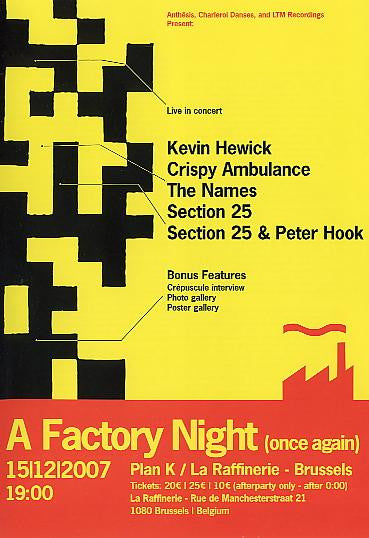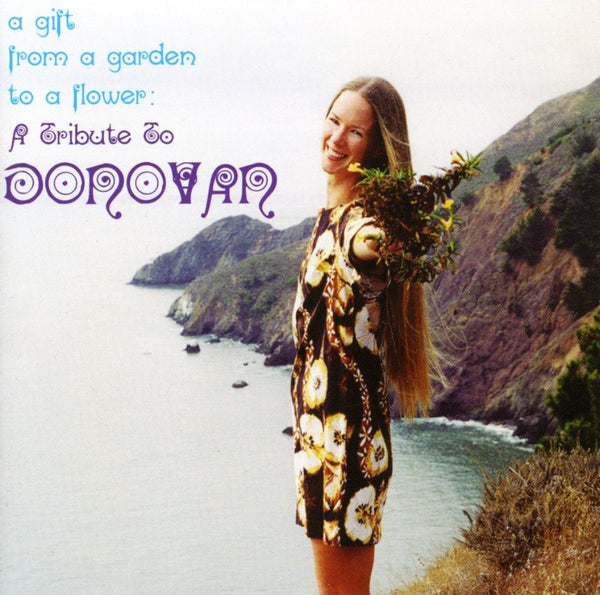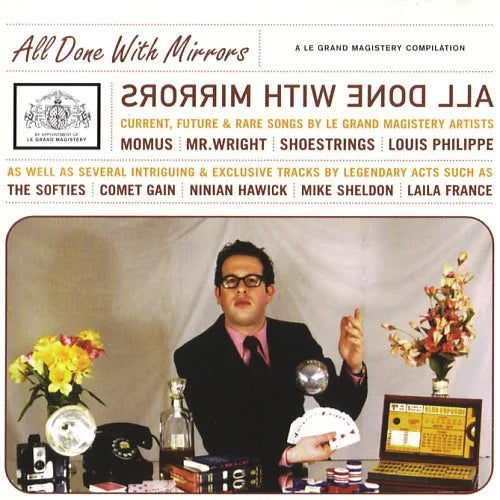This 75 minute CD and download includes original broadcast recordings made between 1940 and 1945 by several well-known Royal Air Force fighter pilots, including Paddy Finucane, Sailor Malan, John Topham, Johnnie Johnson, and J.B. Nicolson - the latter the recipient of the only Victoria Cross awarded to Fighter Command during the Battle of Britain.
Campaigns and operations covered include the Battle of France, the Battle of Britain, nightfighters, North Africa, ground attack ops in Normandy, operations against V-1 and V-2 rockets, and bomber escort. Fighter types discussed (and heard) include the Spitfire, Hurricane, Tempest, Typhoon, Mustang and Beaufighter. The CD begins with a stirring rendition of the The Royal Air Force March, recorded by the Band of the RAF in 1941.
All materials are authentic wartime recordings which have been carefully digitally remastered. The CD booklet includes archive images and detailed historical notes by James Hayward. "Highly recommended" (Best of British, 12/2008)
Tracklist:
1. ROYAL AIR FORCE MARCH
2. AASF HURRICANE PILOT 1940
3. 73 SQUADRON: FRANCE 1940
4. CHANNEL AIR BATTLE 1940
5. BATTLE OF BRITAIN VC
6. ACTUALITY: HURRICANE FLYPAST
7. SAILOR MALAN: SPITFIRE ACE
8. DOGFIGHT OVER FRANCE 1941
9. PADDY FINUCANE: SPITFIRE ACE
10. HURRIBOMBER: 402 SQUADRON RCAF
11. PADDY FINUCANE GETS HOME
12. MALTA: FIGHTER PILOT
13. ACTUALITY: SPITFIRE FLYPAST
14. NIGHTFIGHTER: J.G. TOPHAM
15. NIGHTFIGHTER: C.M. WIGHT-BOYCOTT
16. MUSTANGS: AMERSFOORT RAID
17. DESERT AIR FORCE: TUNISIA
18. NEW ZEALAND SPITFIRE PILOTS
19. V-1 INTERCEPTION: TEMPESTS
20. RCAF IN NORMANDY
21. NORMANDY: TYPHOON ATTACK
22. V-1 NIGHTFIGHTER: TEMPEST
23. RAF MEET SOVIET AIRCRAFT
FIGHTER COMMAND AT WAR 1939-45
Liner notes
When the Second World War broke out on 3 September 1939 the Royal Air Force was just 21 years old, and very much the junior armed service. In 1936 the RAF had been split into five operational commands, with the three functional arms - Fighter, Bomber and Coastal - coming to dominate public perception over the next few decades. Over the next few years, Fighter Command expanded rapidly and replaced its obsolescent biplane squadrons with two legendary fighter types, the Hurricane and Spitfire. The supreme test of Fighter Command came during the Battle of Britain in 1940, but after 1941 an ever-increasing number of offensive operations were pursued, and from 1942 fighters were also engaged in bomber escort duties, both for the RAF and USAAF. In 1943 Fighter Command was split into the Air Defence of Great Britain and the Second Tactical Air Force, with 2TAF concentrating on supporting ground forces during and after the invasion of Europe. Types operated now also included the Tempest, Typhoon and Mustang, while this audio CD also includes recordings by night fighter pilots operating Beaufighters. Between 1939 and 1945, Fighter Command lost 3,690 killed, 1,215 wounded and 601 taken prisoner. 4,790 aircraft were lost.
1. ROYAL AIR FORCE MARCH PAST (2.22)
Performed by the Band of the RAF, conducted by Wing Commander R.P. O'Donnell MVO. Recorded 11 November 1941. Written by Sir Henry Walford Davies. OEA 9332-1. The official march of the RAF was composed in 1918, and combined the rhythm of the bugle call of the Royal Flying Corps with that of the Royal Naval Air Service. The march can be played both as a slow march and a quick march, and has been adopted by most other Commonwealth air forces.
2. AASF HURRICANE PILOT 1940 (4.10)
Recorded 13 May 1940. Talk by unnamed Hurricane pilot of the Advanced Air Striking Force of his experience of air combat in France, including patrol work during the Phoney War period, followed by the Blitzkrieg in May 1940. The pilot describes being shot down by a Bf 109, getting machine-gunned during his descent, and being taken to a French hospital. Only Hurricanes were sent to France, with Spitfires retained in the UK for home defence. The sturdy Hurricane was also better able to operate from improvised grass airfields.
3. 73 SQUADRON: FRANCE 1940 (2.04)
Recorded May 1940. Two Hurricane pilots of 73 Squadron describes a series of dogfights with Me 109s over France, including an air combat on 26 March in which Edgar 'Cobber' Kain was shot down. The pilots are probably Pilot Officer James G. Perry and Sergeant Pyne, although the original recording may be incorrectly dated. During this period the unit operated from Rouvres and Rheims. A talk by New Zealand ace Cobber Kain recorded on 7 March 1940 can be heard on Dunkirk & the Battle of France (CD41-028).
4. CHANNEL AIR BATTLE 1940 (3.10)
Recorded 13 July 1940. Talk by Flying Officer M.H. Ferriss, a Hurricane pilot with 111 Squadron ('treble one'), describing air combat with German bombers attacking a Channel convoy on 10 July. Ferriss describes shooting down a Dornier 17, and then flying his damaged aircraft back to his home base at Croydon. 111 Squadron was the first to operate the Hurricane, in January 1938. Born in London in 1917, Henry Ferriss scored 9 confirmed kills and was awarded the DFC. He was one of the few pilots on either side to admit to machine-gunning downed enemy airmen in their parachutes, as on 18 May 1940 over Germany. Ferriss was killed on 16 August 1940 when his Hurricane collided with a Dornier 17 of KG 76 over Marden, Kent.
5. BATTLE OF BRITAIN VC (6.10)
Recorded 2 December 1940. Flight Lieutenant Eric James Brindley Nicolson (1917-1945) describes the action on 16 August 1940 which lead to him being awarded the Victoria Cross, Britain's highest gallantry medal and the first (indeed only) awarded to Fighter Command during the Second World War. A Hurricane pilot with 249 Squadron, then based at Boscombe Down, Nicolson was on patrol between Poole and Romsey early in the afternoon of 16 August and engaged several enemy fighters, before his own aircraft was hit by cannon shells from a Bf 110 at 17,000 feet. As well as wounding Nicolson the shells ignited his gravity tank, yet even with his Hurricane on fire he still managed to press home an attack on a Bf 110, possibly the same machine which had attacked him. By this time the cockpit was a mass of flame, in the midst of which his left hand held the throttle open while molten metal dripped from the instrument panel onto his feet. Before baling out Nicolson suffered severe burns to his hands, face, neck and legs, and landed in a field at Millbrook, near Southampton. On this recording Nicolson omits to mention that he was fired on by an over-excited Home Guard as he descended, and peppered with shotgun pellets. His VC was presented by King George VI at Buckingham Palace on 24 November, although afterwards the reluctant hero refused to wear the mauve ribbon on his uniform until he was reprimanded for being improperly dressed. Nicolson returned to flying in April 1941, and by 1945 had been promoted to the rank of Wing Commander. Sadly he was killed on 2 May on board a Liberator of 355 Squadron, which crashed in the Bay of Bengal. Although Nicolson has no known grave, his VC is on display at the RAF Museum, Hendon.
6. ACTUALITY: HURRICANE FLYPAST (0.52)
7. SAILOR MALAN: SPITFIRE ACE (6.05)
Recorded 28 June 1941. Talk by Squadron Leader Adolf 'Sailor' Malan on his experiences of air combat, including offensive operations in 1941 by the Biggin Hill Wing. Born in Wellington (South Africa) in 1910, Malan led 74 Squadron during the Battle of Britain, and developed the 'finger four' formation as well as writing 10 Rules of Air Fighting, distributed throughout Fighter Command. Awarded the DSO and two bars, he finished his active fighter career in 1941 with 27 confirmed kills, and was at that time the leading RAF fighter ace. He died of Parkinson's Disease in 1963. The character 'Squadron Leader Skipper' played by Robert Shaw in the 1969 film The Battle of Britain was substantially based on Malan.
8. DOGFIGHT OVER FRANCE 1941 (3.15)
Recorded 26 September 1941. John Byrd talks to a station commander and three fighter pilots, who together describe a large-scale (Wing) sweep over France, and an air battle with three formations of Bf 109s between Gravelines and Cassel.
9. PADDY FINUCANE: SPITFIRE ACE (5.12)
Recorded 22 October 1941. Flight Lieutenant Brendan 'Paddy' Finucane gives a graphic description of his experiences as a fighter pilot, including sweeps over France. At the time this recording was made, Finucane was a flight commander with 452 Squadron, an RAAF squadron flying Spitfires from Kirton-in-Lindsay. On April 15 1941 he shot down German ace Adolf Galland over the Channel. Just after this recording was made he broke an ankle while vaulting a low wall in the blackout, and was off operations until January. Born in Dublin in 1920, Finucane was awarded the DFC and two bars and a DSO, and was credited with 32 victories before being killed in action following a Ramrod raid on Etaples on 15 July 1942.
10. HURRIBOMBER: 402 SQUADRON RCAF (3.28)
Recorded 18 November 1941. Talk by Squadron Leader V.B. Corbett of 402 Squadron RCAF, describing early use of the robust Hurricane as a fighter-bomber and strike aircraft. The 'Hurribomber' entered service in October 1941 after the type was becoming outclassed as a pure fighter, and was operated mainly in North Africa and Burma. Armament included two 250 or 500 lb bombs, or twin 40mm cannon, and later rockets. Under the command of Corbett, 402 Squadron RCAF were the first unit to be equipped with the type, commencing operations from Warmwell. Born in Presqu'lle Point (Canada), Vaughan Bowerman 'Bob' Corbett was a veteran of the Battle of Britain and was awarded the DFC in 1942. While quartered at Coleby Lodge in Lincolnshire in 1941 he kept and rode a handsome white horse. Aged 33, Corbett was killed in a flying accident in Canada on 20 February 1945.
11. PADDY FINUCANE GETS HOME (2.24)
Recorded 22 February 1942. Flying Officer R. Lewis of 602 Squadron describes a dogfight with Focke-Wulf 190s off Dunkirk on 20 February, during a daylight sweep on which Squadron Leader Paddy Finucane was hit and injured, his thigh ripped from knee to hip. The Flying Shamrock managed to struggle home, afterwards commenting: 'The cockpit was awash with blood. It was not until I was feeling a bit sick and dizzy did it dawn on me that it was my blood! Good Dublin blood should not be wasted! How I even managed to land without a crack-up will never be known, luck of the Irish triumphed that day if ever.' 602 Squadron were based at Redhill and flew Spitfires. Finucane had taken command the previous month, and was back in action on 13 March. His fame spread beyond RAF ranks and 'model aeroplanes of his Spitfire with the vivid green shamrocks were sold all along Piccadilly Circus and the Strand.'
12. MALTA: FIGHTER PILOT (3.06)
Recorded 4 May 1942. Talk by an unidentified British Spitfire pilot, recently returned from Malta, who compares the fierce air combat over the besieged Mediterranean island in April to the Battle of Britain. RAF units in Malta fought off attacks by both German and Italian raiders, which delivered 14,000 tons of bombs over two and a half years. During March and April 1942 a large number of relief Spitfires were delivered to Malta from Allied aircraft carriers, and it is therefore impossible to identify the speaker with any certainty.
13. ACTUALITY: SPITFIRE FLYPAST (1.13)
14. NIGHTFIGHTER: J.G. TOPHAM (3.30)
Recorded 15 October 1942. Talk by Squadron Leader J.G. Topham of 219 Squadron, a dedicated night fighter unit operating Beaufighters from Acklington and then Scorton. Topham describes , and praises the work of his observer/radar operator, H.W. 'Wilber' Berridge. John Groves Topham (1917-1987) was a highly successful night fighter pilot, with 13 confirmed kills, and a DSO and DFC with Bar. The pair later flew Mosquitoes with 125 Squadron, which Topham commanded. He retired from the RAF in 1968 with the rank of Air Commodore.
15. NIGHTFIGHTER: C.M. WIGHT-BOYCOTT (2.22)
Recorded 20 January 1943. Talk by Wing Commander C.M. Wight-Boycott, a Beaufighter pilot with 29 Squadron, on shooting down four German bombers in a single night (17/18 January 1943), an action for which he was awarded the DSO. Mike Wight-Boycott (1910-1998) was commanding officer of 29 Squadron, then based at West Malling. The events of this night made Wight-Boycott a fleeting national hero, although his tally for the night was subsequently downgraded to three kills and one damaged.
16. MUSTANGS: AMERSFOORT RAID (4.07)
Recorded 14 February 1943. Talk by Flying Officer Trevor 'Ted' Mitchell of 268 Squadron, who flew a Mustang during a raid on the SS barracks cum transit/penal camp at Amersfoort in Holland. The probable date of the raid was 12 February. The American P-51 Mustang fighter was originally powered by an Allison engine, and first entered RAF service with 268 Squadron early in 1942, quickly proving itself as a fast, rugged fighter type with excellent low-level performance and a longer range than the Spitfire. Four RAF Mustang squadrons saw action over Dieppe in July 1942, and the type generally used for tactical reconnaissance and day intruder operations. Early in 1943 the Allison was replaced by the Rolls Royce Merlin, and the use of drop tanks enabled the Mustang to escort bombers deep into Germany. The result was arguably the finest piston-engined fighter type of the entire war. Ted Mitchell survived the war and afterwards farmed in Rhodesia.
17. DESERT AIR FORCE: TUNISIA (2.14)
Recorded 22 February 1943. Talk by Squadron Leader A.C. Bartley, lately commanding officer of 111 Squadron. Bartley describes the North African landscape, and his work escorting bombers and supporting ground troops. Anthony Bartley (1919-2001) was a veteran of the Battle of Britain, receiving a DFC, and after a period as an instructor and test pilot returned to operations in 1942. He took command of 'Treble One' in August, and led the unit to North Africa in November during the Operation Torch landings. In 1947 he married the celebrated actress Deborah Kerr, thereafter working as a producer and writer in film and television.
18. NEW ZEALAND SPITFIRE PILOTS (3.59)
Recorded 17 August 1943. Talk by Squadron Leader John Milne Checketts DFC and Flying Officer B.E. Gibbs on a battle with eight Bf 109s over France on 9 August. His section claimed to have show down seven. The interviewer is Roy Lee. Both pilots were then flying Spitfires with 485 (NZ) Squadron, based at Biggin Hill. Johnny Checketts DSO DFC (1912-2006) was credited with a total of 14 victories, and as a Wing Commander lead three squadrons during Operation Overlord in 1944.
19. V-1 INTERCEPTION: TEMPESTS (6.48)
Recorded 20 June 1944. talks by Flight Lieutenant A.E. Umbers and Flight Sergeant M.J.A. Rose on methods and dangers of intercepting V-1 flying bombs. Both pilots flew Tempests with 3 Squadron, based at the Newchurch ALG near Dungeness. The piece also includes commentary by Ian Wilson, and actuality of a V-1 ('Diver') raid near Dover, with fighter interception. Shooting down V-1s was highly dangerous, since the 850 kg warhead tended to explode violently. Morris Rose was the first pilot credited with shooting down a V-1 in flight, with landed in an orchard on 16 June. His final tally was eleven V-1s (plus one shared), and two Bf 109s. Born in Dunedin in 1919, Arthur Umbers DFC and Bar destroyed 28 V-1s, but was killed in action on 14 February 1945. As a unit 3 Squadron destroyed 288 flying bombs. Blessed with high speed, excellent low-altitude performance and four Hispano 20mm cannon, the Tempest was one of the best Allied countermeasures against 400 mph V-1s.
20. RCAF IN NORMANDY (1.20)
Recorded 29 June 1944. Talk by two Spitfire pilots of 144 (RCAF) Wing describing air combat with Me 109s in Normandy after D-Day. The pilots interviewed by Alan Melville are Wing Commander James 'Johnnie' Johnson and Flight Lieutenant Alexander Halcrow. A legendary fighter ace, Johnson (1915-2001) was credited with 34 confirmed victories (with seven shared), and awarded the DSO with two bars, a DFC and Bar, an American DFC and a host of overseas honours. He also served in Korea, and retired from the RAF in 1966 with the rank of Air Vice Marshal, afterwards writing several books.
21. NORMANDY: TYPHOON ROCKET ATTACK (2.42)
Recorded 28 July 1944. Stewart MacPherson provides live commentary as a formation of Hawker Typhoon ground attack aircraft dive and attack an enemy position with rockets. Originally intended to replace the Hurricane, the Typhoon was unsuccessful as a fighter, but robust construction and excellent low-level performance made it an excellent ground attack aircraft. Rocket-firing Typhoons were first employed in October 1943, and during the Normandy campaign the following year eighteen Typhoon squadrons were allocated to 2nd Tactical Air Force. The normal payload was eight 60lb projectiles, each well able to take out a tank or locomotive. By the end of June 1944 these aircraft were operating from forward airfields in France and maintained standing patrols, directed onto targets according to a 'cab rank' system. After this recording was made, Typhoons contributed greatly to the German disaster at Falaise.
22. V-1 NIGHTFIGHTER: TEMPEST (2.01)
Recorded 8 September 1944. Talk by Squadron Leader Joseph Berry, a Tempest pilot with a dedicated Fighter Interception Unit (FIU) flight operating from Newchurch ALG and later Manston. He describes patrolling at 5,000 feet, and engaging doodlebugs that pass through coastal the anti-aircraft belt. Born in 1920, Joe Berry previously flew Defiants, Beaufighters and Mosquitos, and in the Tempest destroyed some 60 V-1s. On 23 July 1944 he claimed seven in a single night. He was killed in action on 1 October 1944 during a Ranger sortie over Germany.
23. RAF MEET SOVIET AIRCRAFT (1.34)
Recorded 17 April 1945. A short talk by Flight Lieutenant B.L. Partridge, describing his first encounter with Russian Shturmovik ground attack aircraft and their fighter escort near Berlin, all marked with prominent red stars. Fortunately recognition was mutual and there was no friendly fire. The combined force then attacked a formation of German Fw 190 fighters - a rare sight by this stage in the war.
James Hayward
DARLA RECORDS
2107 Camino Cantera, Vista, CA. 92084 USA
ph. (808) 443-8183, www.darla.com
Lovely label group, dependable distributor, best online boutique.


$14.99
Here at Elefant, we have always been huge fans of Christmas albums, so we finally decided to get our act together, and we’ve put a...


$16.29
A DVD souvenir of A Factory Night (Once Again), the live event staged at the historic Plan K venue in Brussels on 15 December 2007,...


$12.00
1. Pas/Cal - Oh Gosh2. My Morning Jacket - Wear Your Love Like Heaven3. Photon Band - To Sing for You4. The Orange Alabaster Mushroom...


$10.00
A fantastic compilation celebrating the 15th anniversary of California indie label Matinée Recordings. To honor this milestone, the label invited 15 of its artists from...


$13.99
After Twilight is an album of new recordings by artists associated with Les Disques du Crépuscule. With contributions from Antena, Anna Domino, Paul Haig, Blaine L....


$10.00
Release date: 9/28/1998 Louis Philippe - Sunshine Louis Philippe - She Means Everything To Me Momus - The Homosexual (Live) Shoestrings - Summer Days Mr....


$6.99
1. E*Vax "Awl"2. White Rainbow "See and The Field Feels" 3. Mudboy “Study for a Sleep Album- 2nd Movement”4. Dania Shapes "Weird Boombox" 5. Bird...


$14.75
Following on from our popular primer A Young Person's Guide to the Avant-Garde, LTM now offers a comprehensive overview of American avant-garde music in the 20th...